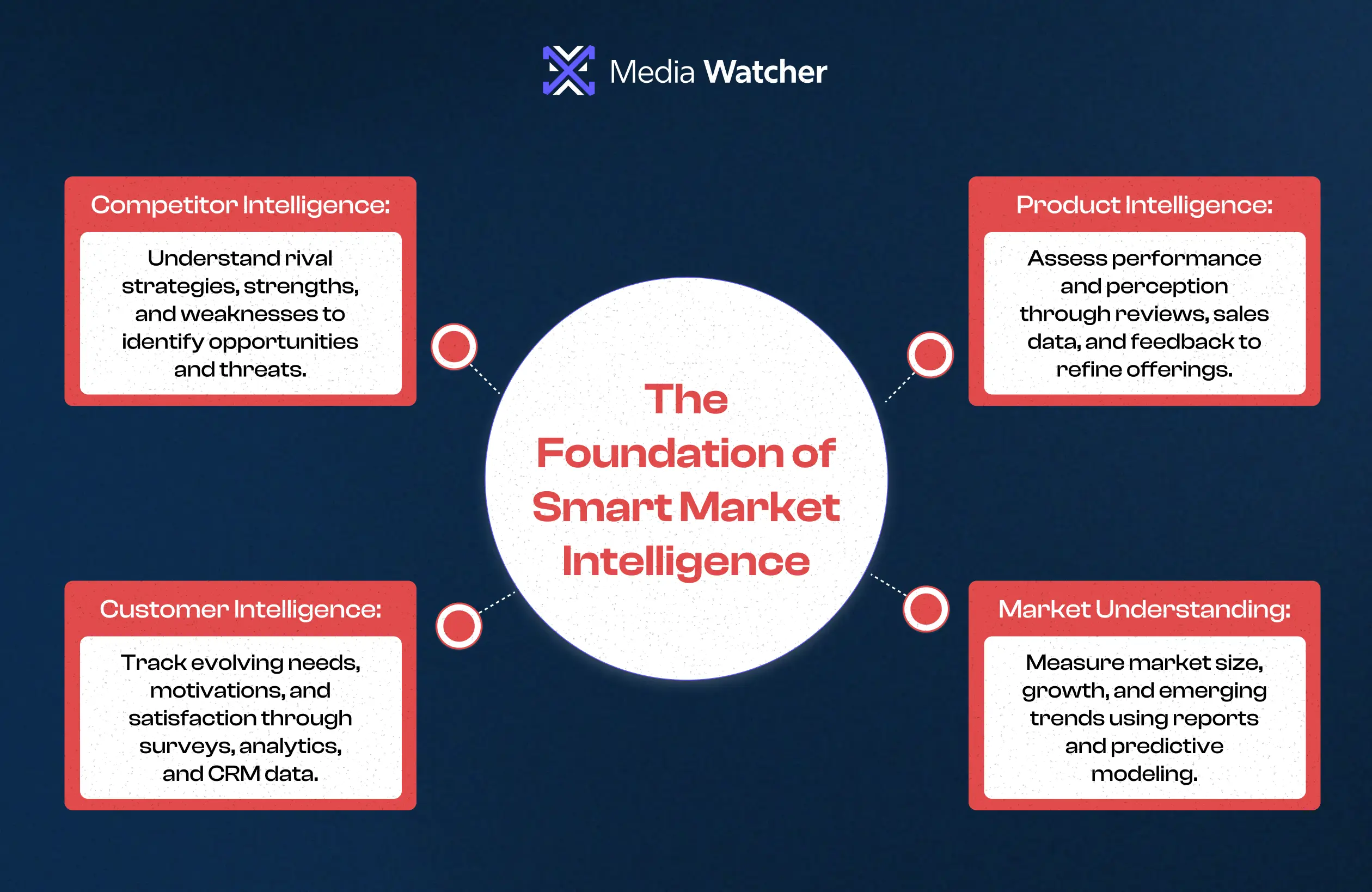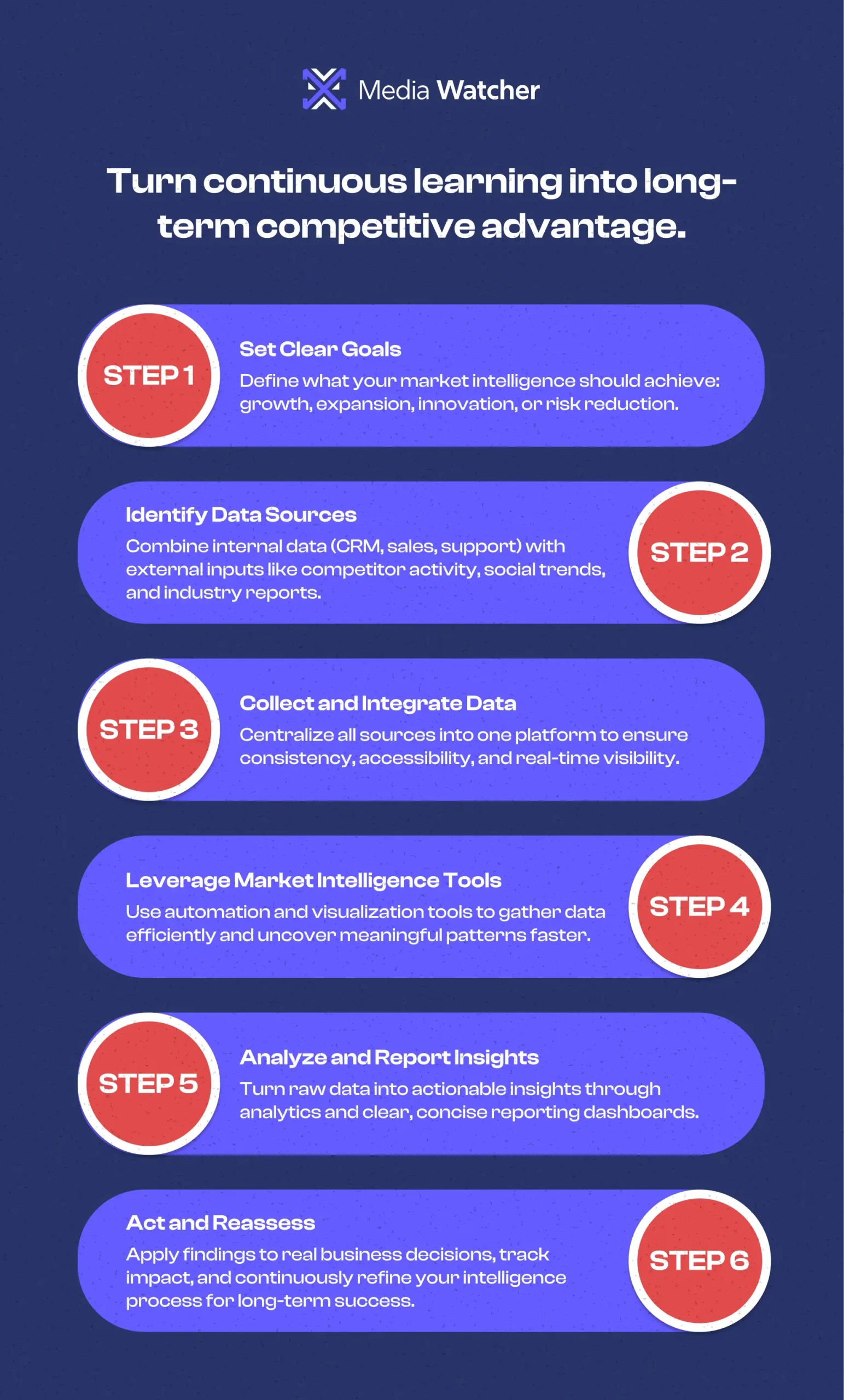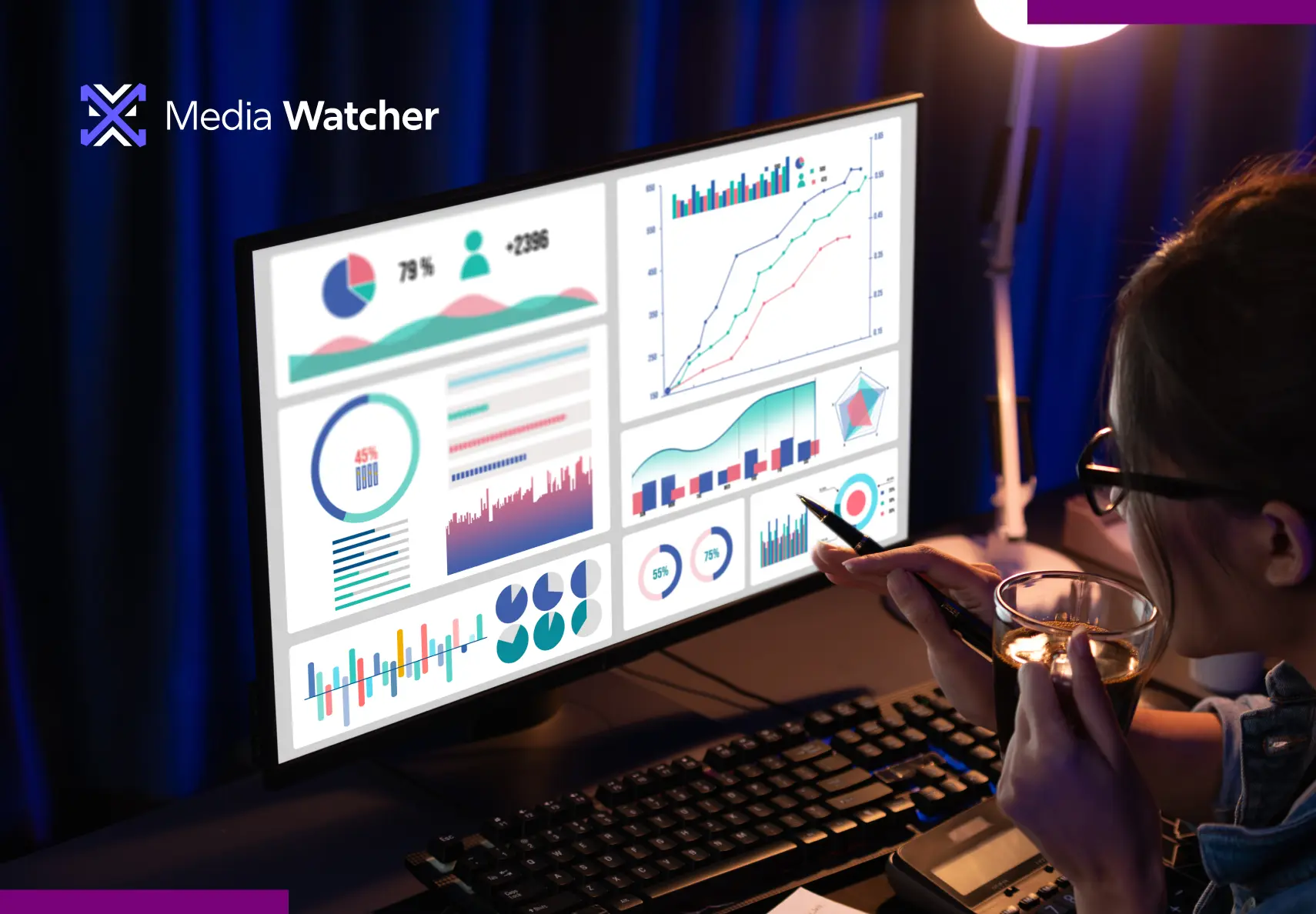Businesses can benefit in multiple ways from publicly available data, but only a few know how to turn it into a real advantage.
This is where Market Intelligence makes a difference by combining market data, customer insights, and competitor activities to formulate a clear strategy.
In fact, a McKinsey survey revealed, companies that use customer and market analytics effectively are 2.6 times more likely to achieve significantly higher ROI than those that do not. Research also shows that 50% of analytics-driven companies achieve above-average sales, compared with only 22% of laggards, and they are 19 times more likely to report above-average profitability.
Market intelligence does not only include reports and dashboards. It is not merely about accumulating information itself; it is about knowing what is actually important.
The main objective is to effectively analyze the information and identify lessons that inform decision-makers and enable prompt action. Proactive use of Market Intelligence helps businesses to identify some trends before they become trends and well-known to the masses.
Before examining the operation of Market Intelligence, one should first grasp its definition and how it differs from conventional research techniques.
What Is Market Intelligence? Understanding Its Core
Market Intelligence is defined as a process of gathering and analyzing information about customers, competitors, industry trends, and market changes. Through this information, the businesses make informed decisions to facilitate growth, innovation, and. risk management
Market intelligence is an uninterrupted and persistent knowledge of the business environment, such as the demand of the customers, the behavior of the competitors, and new trends in the market.
How Market Intelligence Works and Turns Data into Insight?
The process of Market Intelligence is systematic and structured, and it works as follows:
- Data Collection: The process starts with gathering data on different platforms, including internal sales statistics, customer databases, social listening tools, market, and other open platforms, including news sites, blogs, and websites.
- Market Intelligence Analysis: Thereafter, the analysis is conducted with the assistance of analytics and AI models, identifying trends, patterns, and predictive indicators in large volumes of data.
- Reporting & Dissemination: Upon completion, findings are distilled into Market Intelligence Reports that summarize them for decision-makers in the departments.
- Decision & Action: Such insights are further used by the leadership to refine strategies, enhance products, and discover new opportunities.
- Feedback Loop: Finally, businesses keep their insights up to date by routinely rechecking and providing feedback. This helps them adapt quickly as the market changes.
This process forms the backbone of Market Intelligence. The next step is to see what holds it all together, the four core pillars behind it.
What are the Four Pillars of Market Intelligence Analysis?
Market Intelligence is founded on four essential pillars that enable businesses to gain a comprehensive understanding of the market. Each pillar works in harmony with the others as they combine insights to create a cohesive view rather than viewing them in isolation.

How Market Intelligence Differs from Market Research
Market Intelligence and Market Research Intelligence often overlap but serve different purposes. Simply put, the research explains what is happening currently in the market. Market research answers specific questions using surveys and focus groups. It provides valuable insights into customer opinions and product performance.
Alternatively, market intelligence is also continuous and more strategic. It serves as a radar that makes businesses be conscious of their external circumstances that influence their performance.
Research and market insights, when combined, give a general perspective of the market. By integrating both, organizations will make more accurate predictions and innovate with confidence by responding fast to changes.
The importance of Market Intelligence Tools and Platforms in the Decision Making?
Why Market Intelligence Tools and Platforms are Crucial in Decision Making?
There are various types of market intelligence tools, and they are used to serve a specific purpose. For instance, web and social listening tools that monitor conversations and sentiment across digital platforms help to capture customer opinions and emerging trends.
These also track competitors’ prices and product launches. They also keep an eye on business strategies to help companies better understand their market positioning.
Also, the platforms use reviews and support channels to examine customer feedback and upgrade products and services.
Moreover, a Market Intelligence Platform employs AI to derive real-time insights from this data and act on them.
Modern market intelligence software can be integrated with CRM and business intelligence systems that deliver timely intelligence to the decision maker during his or her processes.
Predictive AI and automation assist organizations to identify changes promptly, forecast risks, and react in the most effective way.
How Market Intelligence Data Powers Strategic Decisions
Market intelligence data is an essential determinant of strategic decision-making in business. It assists companies in venturing into new markets and creating products that are in demand, or addressing current issues.
The data is highly commendable for indicating the demand patterns and highlighting regional opportunities for the businesses to tap into. It helps them simply identify what customers need but do not have.
Moreover, the data also measures brand sentiment, which is how people perceive the brand and what exactly they feel about it. Market sentiment affects more than just reviews and brand image. By analyzing it, businesses can improve their marketing messages.
Indicatively, A consumer goods company can observe that customers are more environmentally conscious and want sustainable products. This information will enable the company to introduce environmentally friendly packaging ahead of its rivals. This move will help it build its brand image and attract environmentally sensitive consumers.
This proactive resolution demonstrates how business owners depend on Market Intelligence Reports to identify opportunities and drive long-term growth. The reports should track sales and competitor data, but also look at social and political trends. This includes things like growing environmental awareness and changes in regulations, as these can influence what consumers prefer.
How can a Market Intelligence Analyst Help Businesses?
A Market Intelligence Analyst helps by creating reports that provide clear insights. He also works closely with marketing, sales, and product teams to keep everyone aligned with market data.
Analysts now also use traditional research methods with data visualization and storytelling to communicate their findings effectively. It is advisable for the companies to build internal teams for ongoing monitoring, or better , they can hire specialized providers for broader data coverage.
Analysts are professionally competent to make the complicated information simpler and help the business to foresee potential opportunities or losses.
How to Build a Sustainable Market Intelligence Strategy?
A strong market intelligence research framework helps businesses turn continuous learning into a long-term advantage.

How Media Watcher Turns Market Intelligence Into a Competitive Advantage
Market Intelligence is not a one-time task, it is a continuous process that assists companies in making more timely and sound decisions.
Media Watcher assists companies by offering real-time tracking and automated analytics. Along with that, its actionable insights keep strategies aligned with market shifts.
Companies can transform data into direction by investing in the right market intelligence services, skilled analysts, and a long-term intelligence strategy.
Businesses that treat data as strategy, not support, lead their markets, not follow them. Book a Free Demo with Media Watcher to see how intelligence becomes impact.
FAQs:
How do you use market intelligence?
You apply data-driven insights from competitors, customers, and market trends to guide strategy, drive innovation, and fuel business growth.
How to gather market intelligence?
Collect information from internal systems, customer feedback, competitor analysis, social listening, and market reports, then analyze patterns for actionable insights.




